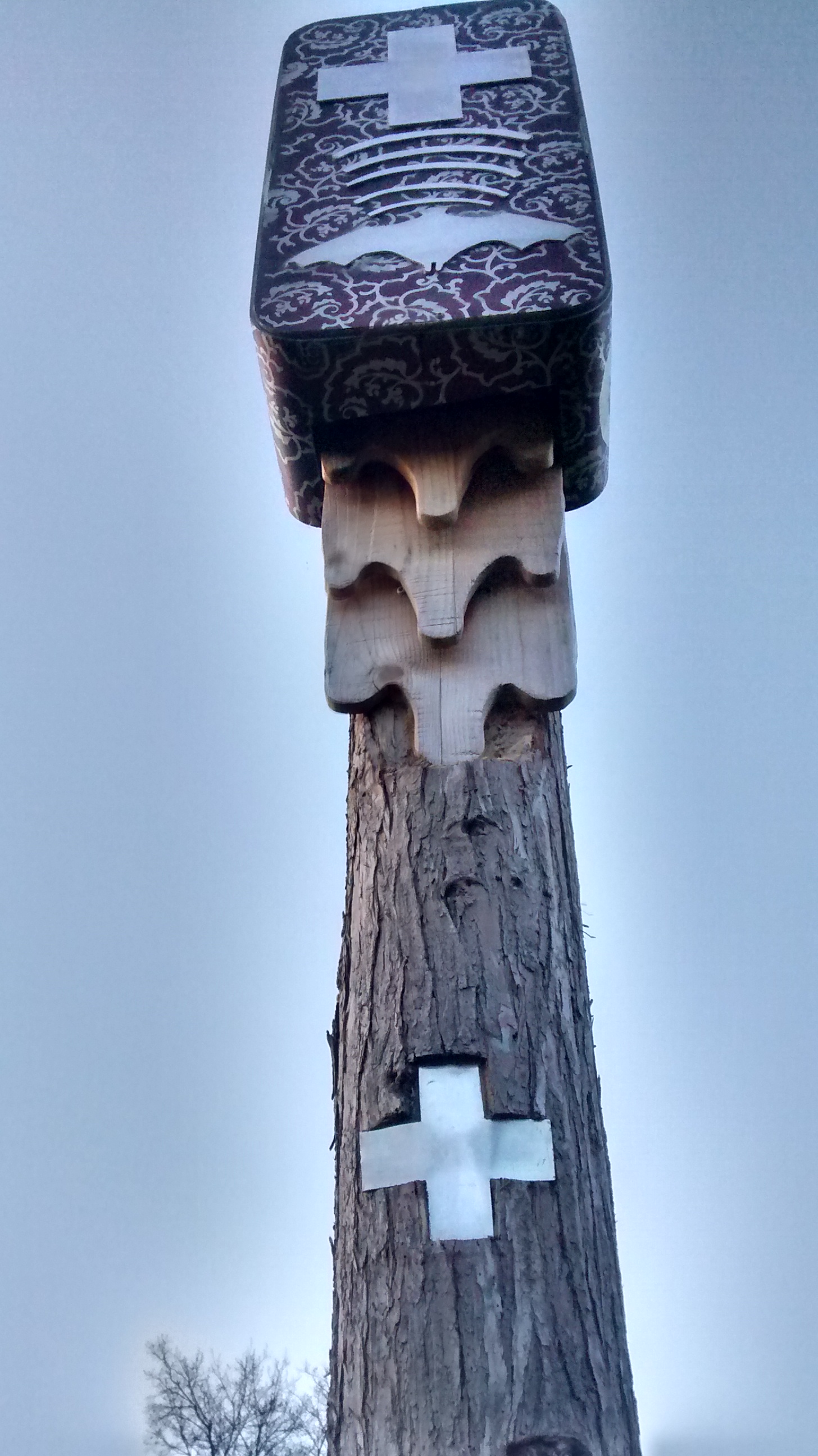
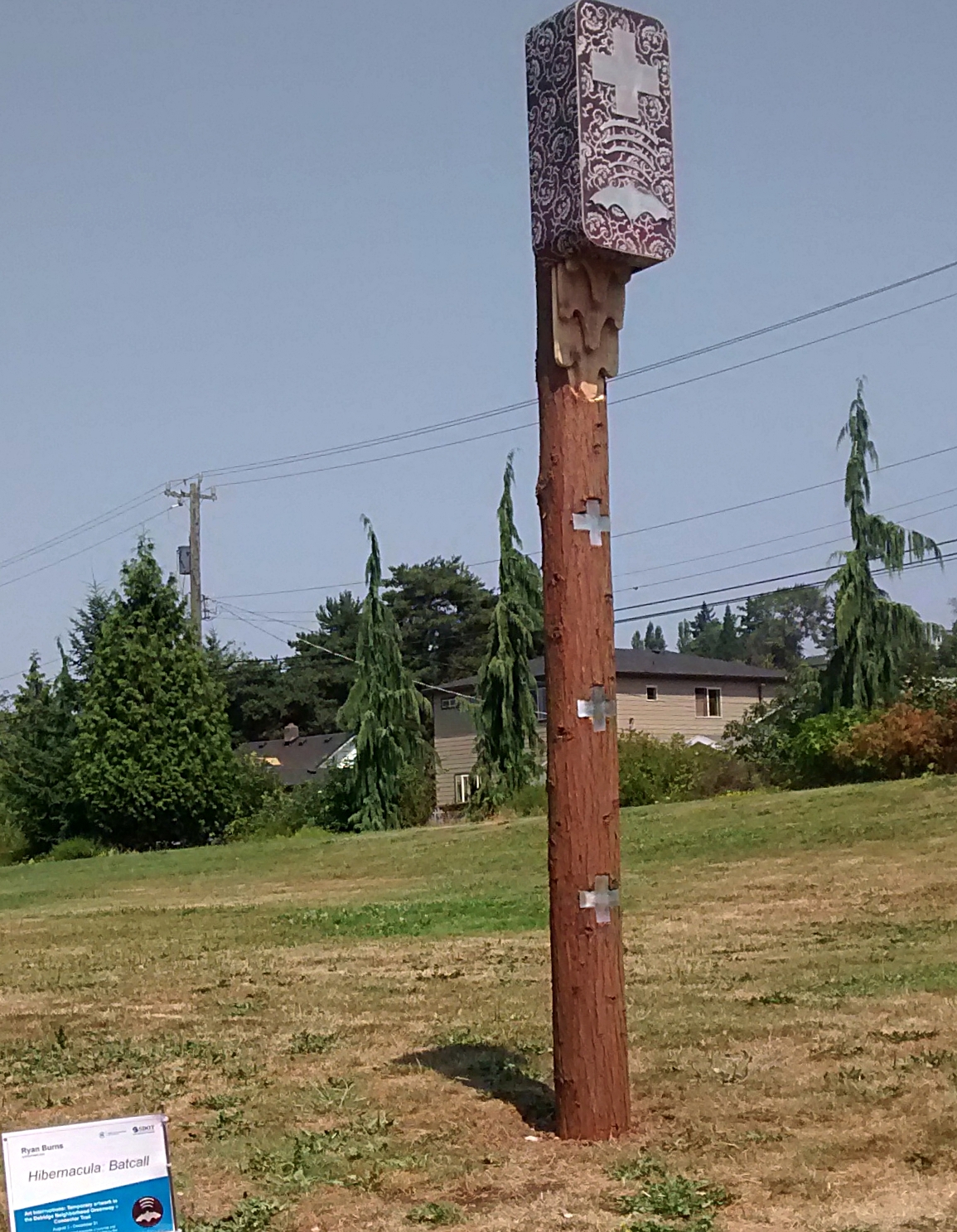
Hibernacula: Batcall
Ryan Burns
Ryan Burns’ drive is to understand how society can better understand our relationship with the natural world. This inspired him to create a sculptural bat house that addresses current threats to bats not only in Washington state, but also nationally. Installed next to an open lawn that bats find ideal for hunting, Burns repurposed an old public phone box cover to house a wooden bat box, which is adorned with stenciled objects that reference Emergency Medical Technicians (EMT) and medical imagery. Burns has experience with bats and has observed their timid nature; if threatened, bats react as mice do, by hiding or staying hidden. To ensure the safety and comfort of the bats, Burns worked with the Seattle Parks and Recreation’s ecologist, and the bat box conforms with International Bat Coalition standards. The bat box is mounted independently within the phone box so it can easily be unbolted and relocated to the Bats Northwest’s preserve in Lynnwood at the end of Art Interruptions.
The Office of Arts & Culture, in partnership with the Seattle Department of Transportation (SDOT), commissioned seven emerging public artists to create temporary art installations within the Delridge Neighborhood Greenway and Delridge Connector Trail for Art Interruptions 2017. The artworks inhabit city sidewalks and parks and offer passers-by a brief interruption in their day, eliciting a moment of surprise, beauty, contemplation or humor. Art Interruptions is funded by the Seattle Department of Transportation 1% for Arts Funds.
Art Interruptions Walking Tour
Saturday, October 7, 10 a.m. – 12 p.m
Explore the West Seattle neighborhood, experience Art Interruptions and meet the participating artists. Hosted by Feet First.
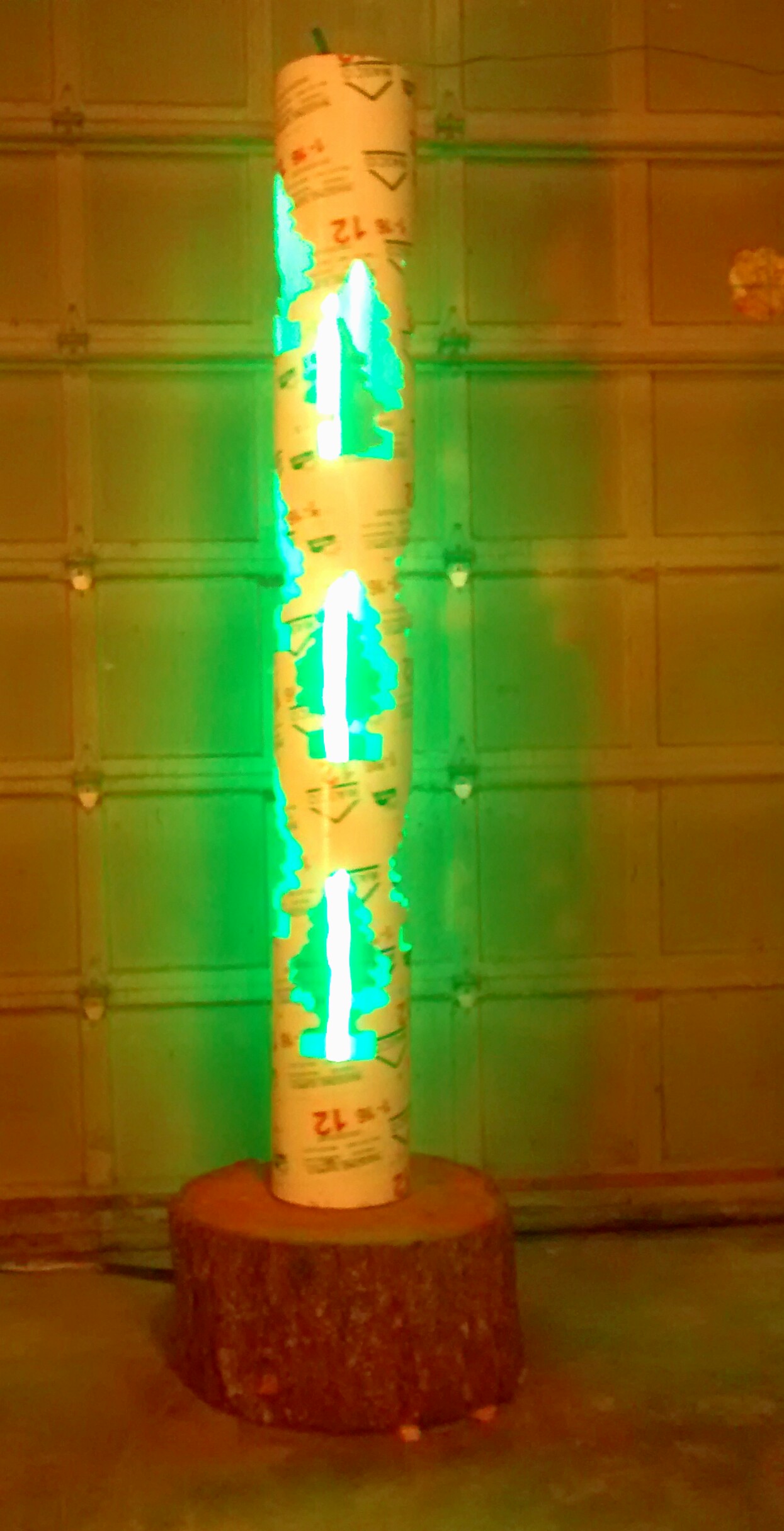

concrete
4’ x 16’ x 4’
2014
Public Art
Cave Junction Oregon

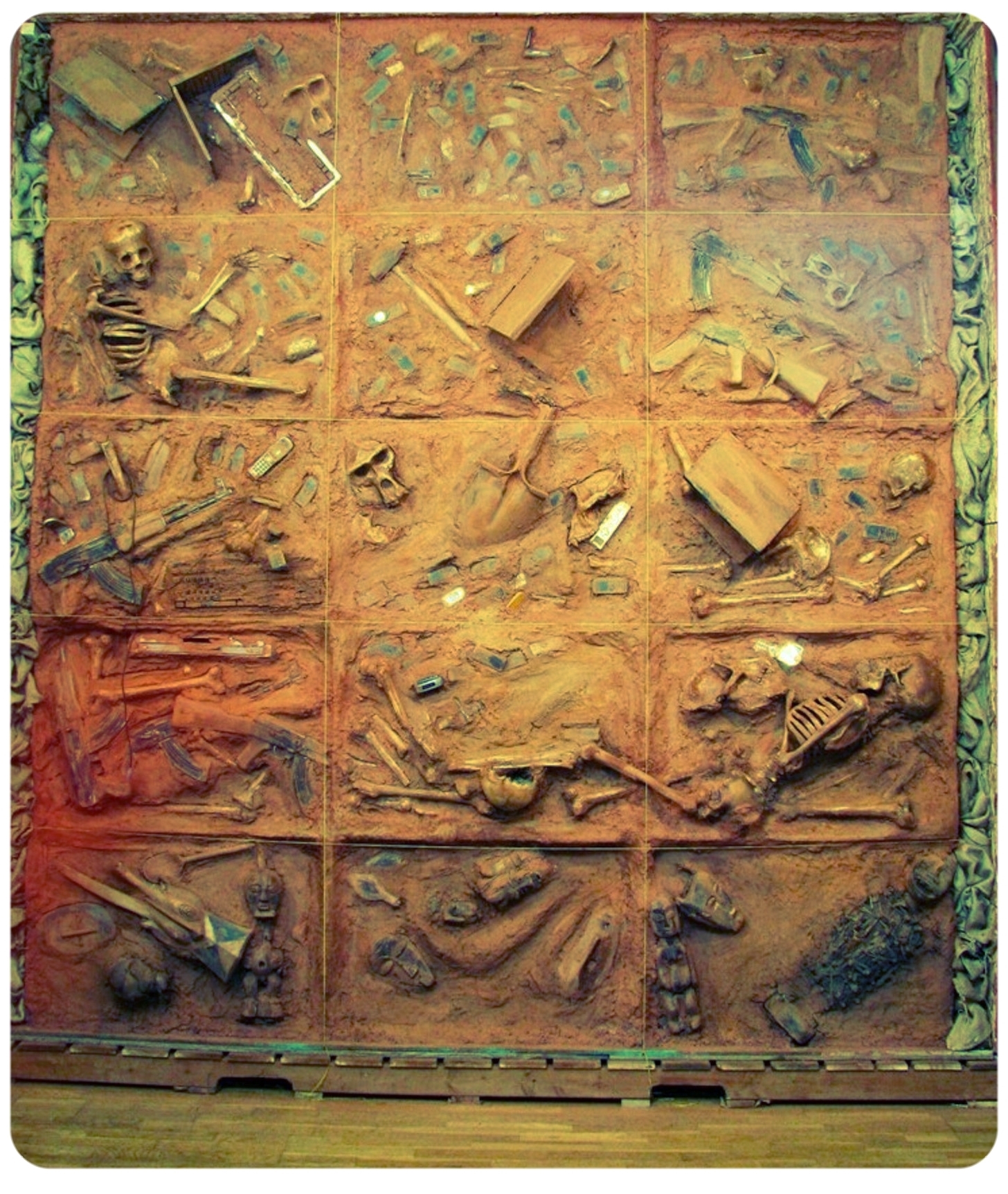
cob, red oxide, bones, cell phones, wood, plaster
Dimensions:
10’ x 10’ x 4’
2009
The crate reveals objects in the matrix telling the story of 20+ years of war and rare mineral exploitation in the Democratic Republic of Congo. The artifacts of cultural disarticulation lie with crude hand-tools of small pit mining; traces of the bushmeat trade and discarded high-tech ephemera
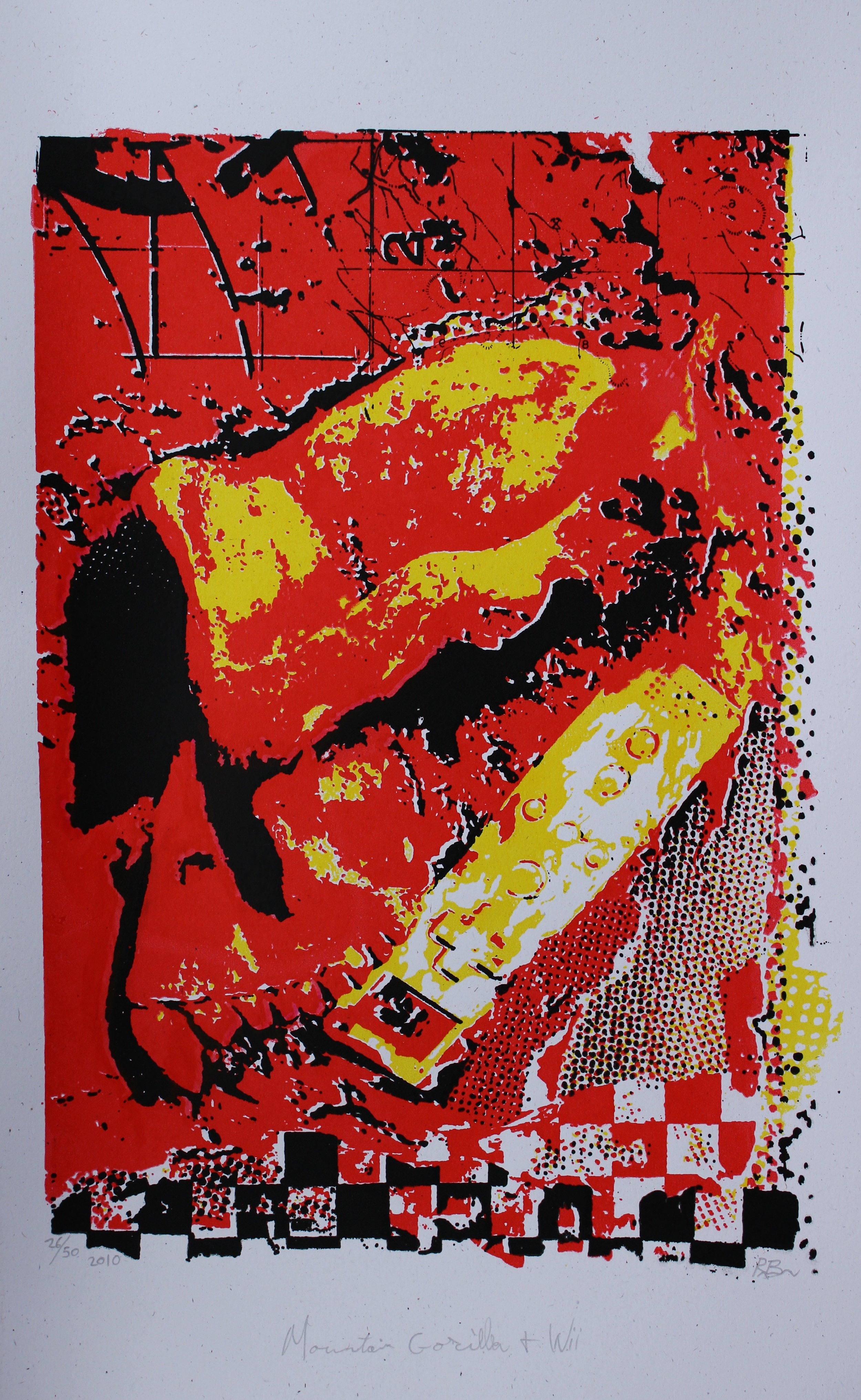
2010 gorilla skull print
silkscreen collage, detail of Profane Relics
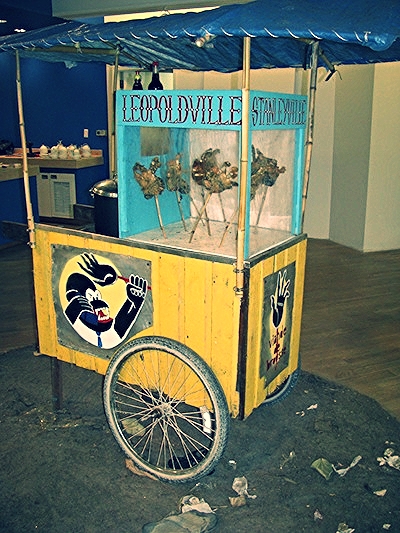
2011
a collaboration
between Ryan Burns/Roger Peet

scratch board
2006
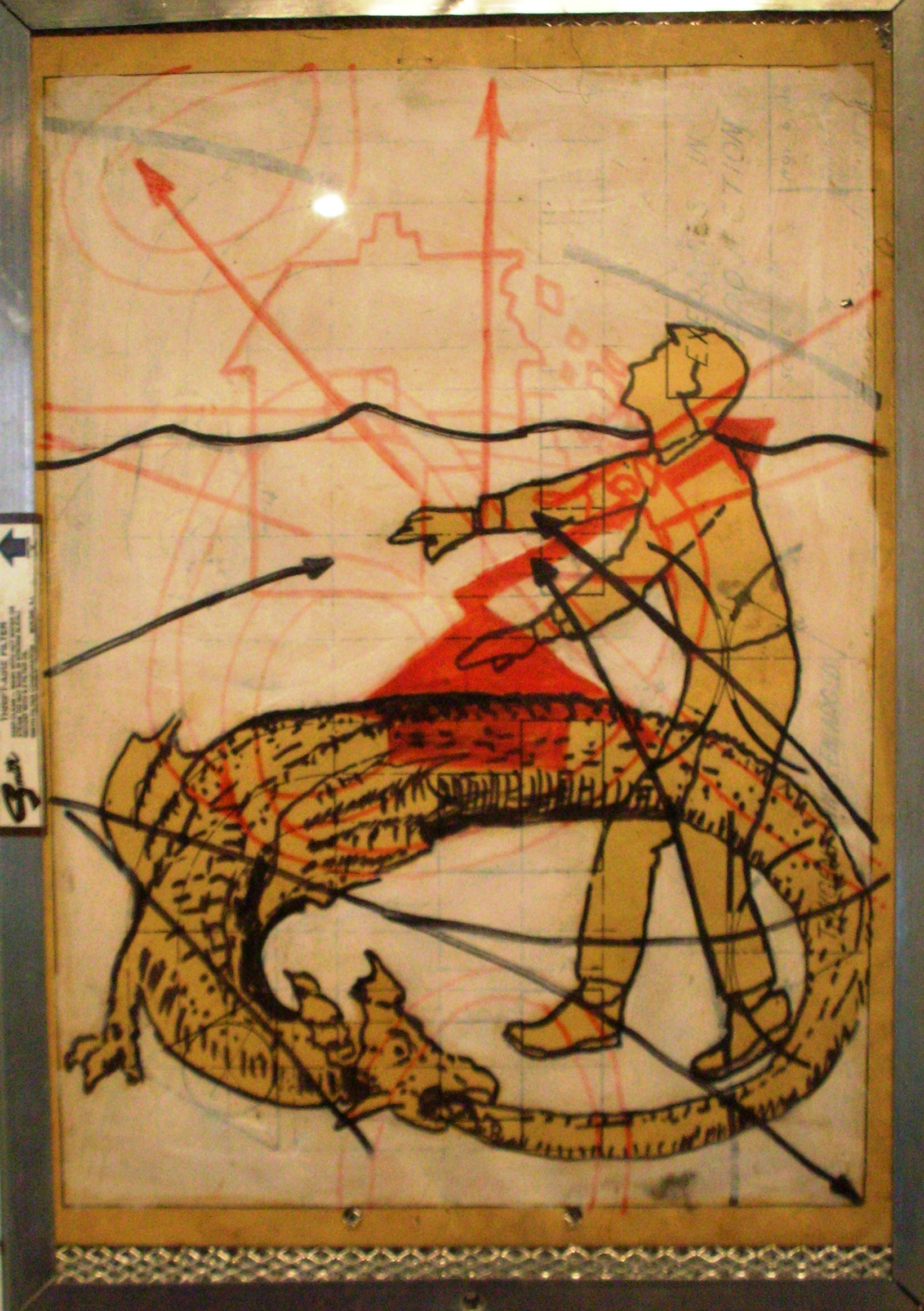
sharpie and gesso on found paper
Dimensions:
12x6
2003
A series of ten paintings and ten drawings that explore issues of survival and ecology.The series was made at my studio (2001- 2005) in New Orleans
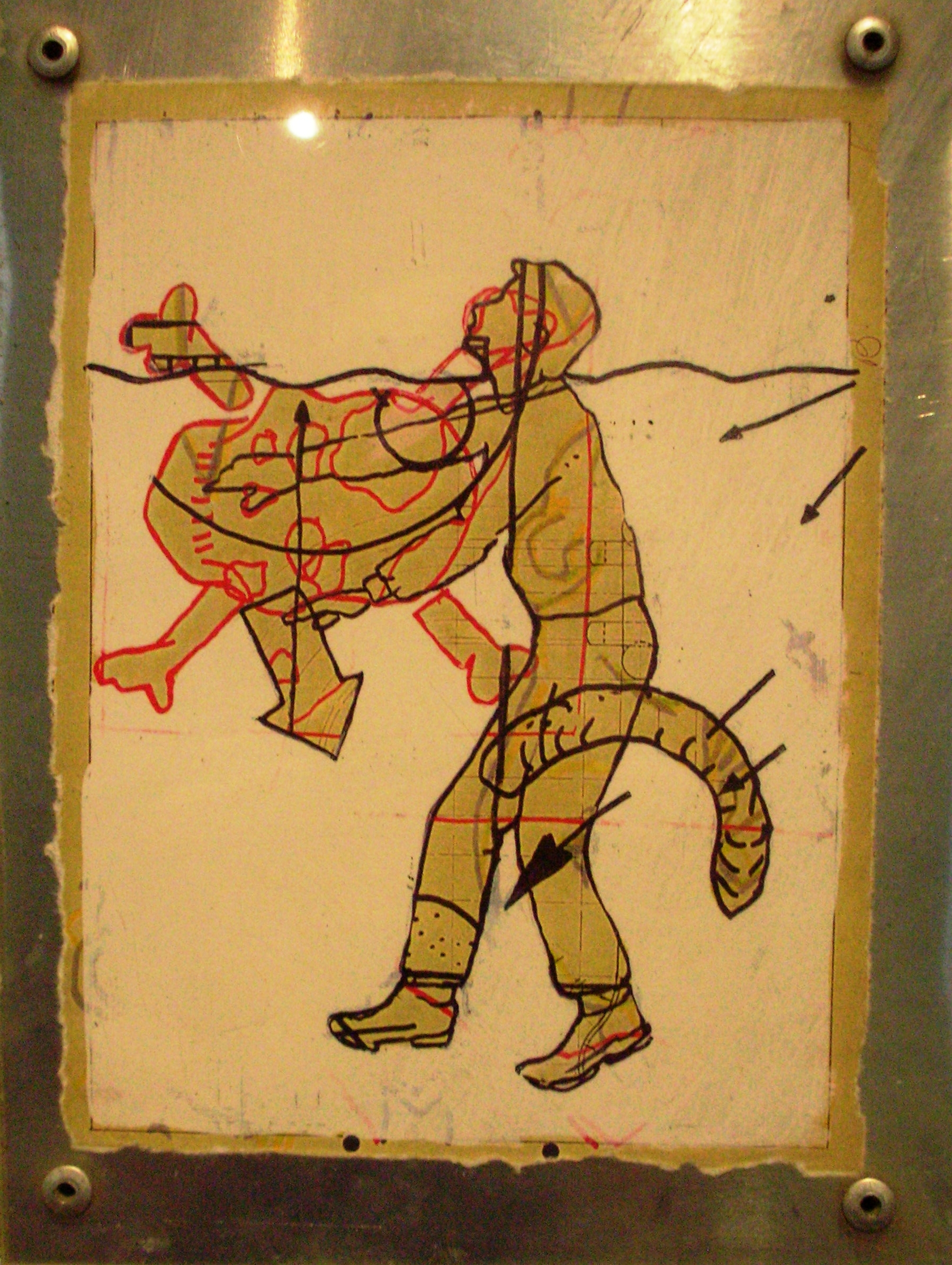
sharpie and gesso on found paper
Dimensions:
12x6
2003
A series of ten paintings and ten drawings that explore issues of survival and ecology.The series was made at my studio (2001- 2005) in New Orleans

oil on canvas
50" x 36"
2003
A series of ten paintings and ten drawings that explore issues of survival and ecology.The series was made at my studio (2001- 2005) in New Orleans
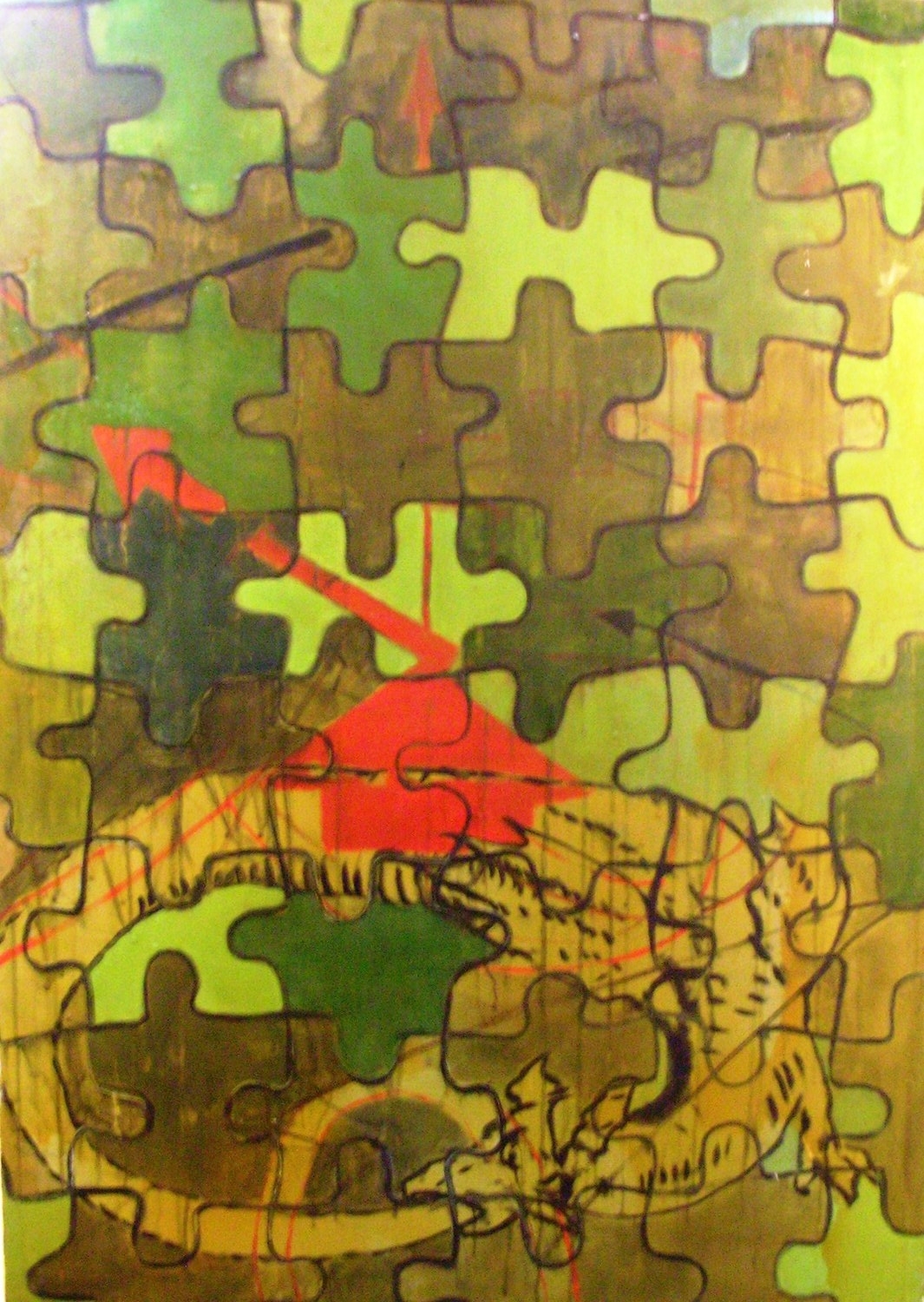
oil on canvas
50" x 36"
2003
A series of ten paintings and ten drawings that explore issues of survival and ecology.The series was made at my studio (2001- 2005) in New Orleans

Found objects and beeswax encoustic
37" x 25" x 2"
1997
Woods is a piece I made as part of a series entitled The Secret Nature of Debris

found object (axe handle) paper pulp, tree sap,wood
48" x 9" x 3.5"
1997
Reintergrated is a piece I made as part of a series entitled The Secret Nature of Debris while living in Portland in my studio at Spurkraft a artist collective and free school that me and some friends started in 1997--1999

Flight Study was made while I attended Herron School of Art in Indianapolis. It's created from a sketch I made while riding freight trains out west in Oregon. It's made using construction caulk and oil paint on found wood from an abandon building I lived in till it was severely damaged by lightning. 1995

found pager, wood, plaster 1997

found object heat set into aluminum matrix
1995


















Hibernacula: Batcall
Ryan Burns
Ryan Burns’ drive is to understand how society can better understand our relationship with the natural world. This inspired him to create a sculptural bat house that addresses current threats to bats not only in Washington state, but also nationally. Installed next to an open lawn that bats find ideal for hunting, Burns repurposed an old public phone box cover to house a wooden bat box, which is adorned with stenciled objects that reference Emergency Medical Technicians (EMT) and medical imagery. Burns has experience with bats and has observed their timid nature; if threatened, bats react as mice do, by hiding or staying hidden. To ensure the safety and comfort of the bats, Burns worked with the Seattle Parks and Recreation’s ecologist, and the bat box conforms with International Bat Coalition standards. The bat box is mounted independently within the phone box so it can easily be unbolted and relocated to the Bats Northwest’s preserve in Lynnwood at the end of Art Interruptions.
The Office of Arts & Culture, in partnership with the Seattle Department of Transportation (SDOT), commissioned seven emerging public artists to create temporary art installations within the Delridge Neighborhood Greenway and Delridge Connector Trail for Art Interruptions 2017. The artworks inhabit city sidewalks and parks and offer passers-by a brief interruption in their day, eliciting a moment of surprise, beauty, contemplation or humor. Art Interruptions is funded by the Seattle Department of Transportation 1% for Arts Funds.
Art Interruptions Walking Tour
Saturday, October 7, 10 a.m. – 12 p.m
Explore the West Seattle neighborhood, experience Art Interruptions and meet the participating artists. Hosted by Feet First.
concrete
4’ x 16’ x 4’
2014
Public Art
Cave Junction Oregon
cob, red oxide, bones, cell phones, wood, plaster
Dimensions:
10’ x 10’ x 4’
2009
The crate reveals objects in the matrix telling the story of 20+ years of war and rare mineral exploitation in the Democratic Republic of Congo. The artifacts of cultural disarticulation lie with crude hand-tools of small pit mining; traces of the bushmeat trade and discarded high-tech ephemera
2010 gorilla skull print
silkscreen collage, detail of Profane Relics
2011
a collaboration
between Ryan Burns/Roger Peet
scratch board
2006
sharpie and gesso on found paper
Dimensions:
12x6
2003
A series of ten paintings and ten drawings that explore issues of survival and ecology.The series was made at my studio (2001- 2005) in New Orleans
sharpie and gesso on found paper
Dimensions:
12x6
2003
A series of ten paintings and ten drawings that explore issues of survival and ecology.The series was made at my studio (2001- 2005) in New Orleans
oil on canvas
50" x 36"
2003
A series of ten paintings and ten drawings that explore issues of survival and ecology.The series was made at my studio (2001- 2005) in New Orleans
oil on canvas
50" x 36"
2003
A series of ten paintings and ten drawings that explore issues of survival and ecology.The series was made at my studio (2001- 2005) in New Orleans
Found objects and beeswax encoustic
37" x 25" x 2"
1997
Woods is a piece I made as part of a series entitled The Secret Nature of Debris
found object (axe handle) paper pulp, tree sap,wood
48" x 9" x 3.5"
1997
Reintergrated is a piece I made as part of a series entitled The Secret Nature of Debris while living in Portland in my studio at Spurkraft a artist collective and free school that me and some friends started in 1997--1999
Flight Study was made while I attended Herron School of Art in Indianapolis. It's created from a sketch I made while riding freight trains out west in Oregon. It's made using construction caulk and oil paint on found wood from an abandon building I lived in till it was severely damaged by lightning. 1995
found pager, wood, plaster 1997
found object heat set into aluminum matrix
1995